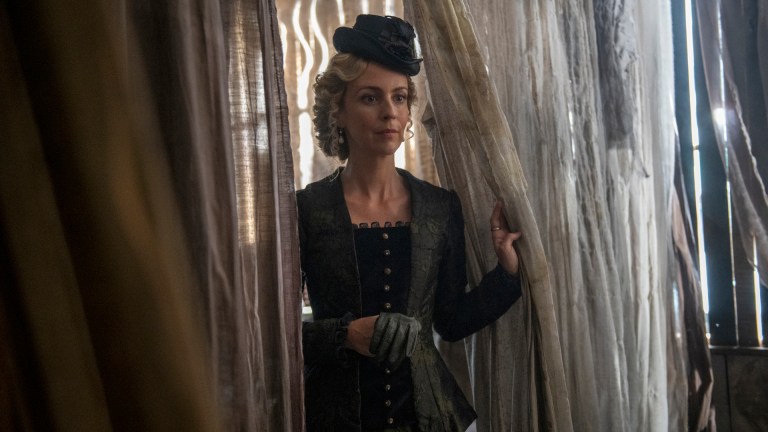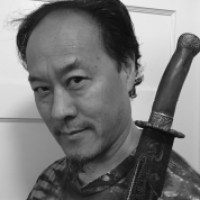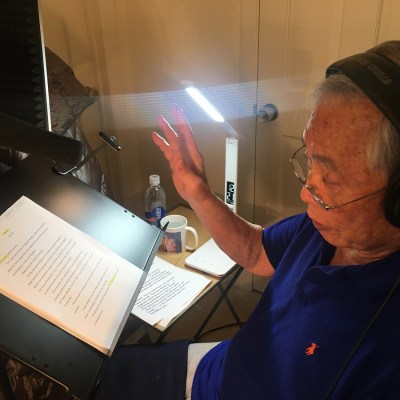Warrior: The Historical Inspiration for Nellie Davenport
The latest character to join Warrior is based on a historical champion who fought to save Chinese women from human trafficking.

This article contains Warrior spoilers.
In “The Chinese Connection,” the second episode of Season 2 of Warrior, a new character named Nellie Davenport (Miranda Raison) enters the show. She’s a wealthy widow committed to ending the exploitation of Chinese women by leading police raids on brothels and offering alternatives to Warrior’s favorite brothel madam, Ah Toy.
“We introduced the character of Nellie Davenport,” reveals Warrior showrunner Jonathan Tropper, “She was based on an actual person.”
Tropper is quick to point out that Warrior is not a docudrama. He sees it as more like a martial arts fable or graphic novel that takes its inspiration from historical people and events. Nevertheless, the inspiration for Davenport is based on a remarkable San Franciscan heroine, Donaldina Cameron.
“She was all we talked about for a while,” Tropper says. “She was based on the nun who devoted herself to the rescuing of young Chinese girls who were forced into sex working.”
The White Devil Who Freed Chinese Sex Slaves
Donaldina Cameron was born in 1869 and immigrated from New Zealand to California when she was only three. She was raised on a sheep ranch in San Gabriel Valley, but after twenty years living out in the sticks, she moved to the big city – San Francisco. She accepted a job in Chinatown, working as a sewing teacher at the Occidental Mission Home for Girls, a refuge founded by the Presbyterian Church in 1874. The Home rescued Chinese women from slavery, predominantly prostitution, which was a major problem at that time.
In 1875, the Page Act banned Chinese women from entering America. As a result, Chinese women were smuggled into the country and sold as indentured servants or slaves. By the late 1880s when Cameron arrived in San Francisco, slavery of Chinese women had run rampant. It was known as the “Yellow Slave Trade” and its victims seldom survived for more than five years beyond when they landed in the States.
Seven years after the Page Act, the more stringent Chinese Exclusion Act was established. The Exclusion Act is brought up in this episode of Warrior during the political rally. It’s a major part of Buckley’s (Langley Kirkwood) agenda, legislation that he’s aggressively working towards, and it provides a time frame for when the events of the show are set.
The Chinese Exclusion Act a significant and shameful point in U.S. history. It was the first and only time that the United States of America singled out and banned an ethnic group with a blatantly racist law. The Chinese Exclusion Act suspended Chinese immigration and declared Chinese immigrants ineligible for naturalization with the objective of maintaining white “racial purity.” Many Chinese had already immigrated to America for the Gold Rush and to build the transcontinental railroad.
As a result of the Exclusion Act, American Chinese faced even more oppression, especially the women. When Occidental Mission Home rescued these women, mostly girls, they provided them sanctuary and taught them English, homemaking skills, and Christianity.
From sewing teacher to heroine, Cameron became the superintendent of the Home in only two years despite her lack of prior experience. Over the next 40 years, she saved thousands of Chinese women from the clutches of human traffickers, pulling them from brothels herself and escaping through the labyrinthian alleys and rooftops of Chinatown.
The Tongs controlled this slave trade and had the police department in their back pockets. The Chinese Six Companies, which is also an organization that is referenced in Warrior, attempted to stop the Tongs. However, like the police, they had also been infiltrated by Tong corruption. Established in San Francisco in 1882, the Chinese Six Companies eventually shook off the Tongs and evolved to become the Chinese Consolidated Benevolent Association, a respected organization that has dozens of branches across North America today.
Cameron worked tirelessly at her mission, earning the wrath of the Tongs and slavers. They called her “White Devil” and “White Witch,” a moniker that the press picked up and spread. She was also called “Chinatown’s Angry Angel” which became the title of her biography by Mildred Crowl Martin, one of three biographies that retold her inspirational story.
Cameron had her critics too. The women she rescued were not allowed outside of the Mission Home unescorted. They were forced to convert to Christianity and their Chinese heritage was scrubbed from their education. They were subjected to Presbyterian programming and were kept within the house until they married a good Christian man, and even then, that man had to be approved by Cameron. However, given that the alternative was a life of prostitution and an early death, Christian conversion was a path of redemption.
It’s easy to criticize Cameron’s shortcomings now, but in the context of the times, she was revolutionary. She fought diligently for the rights of Chinese immigrants until she retired in 1934. The Chinese Exclusion Act wasn’t repealed until 1943. Ironically, that was the same year that Japanese Americans were sent to internment camps in Manzanar and Tule Lake. Cameron died in Palo Alto in 1968.
Cameron’s legacy survives to this day. The Donaldina Cameron House is the official San Francisco landmark #44. It stands on 920 Sacramento Street at Joice on the outskirts of Chinatown where the Occidental Mission Home for Girls once stood. The original Mission Home was destroyed during the 1906 earthquake. And while the city was in flames, Cameron searched through the burning rubble to recover the log book so she could prove that she had guardianship of the women she had rescued, assuring that the traffickers could not lay claim on them once again. The building was rebuilt in 1908 using the bricks that had been salvaged from the original structure.
Today the Cameron House has evolved into a comprehensive family service organization. Cameron House serves the needs of low-income and immigrant Asian youth and families in San Francisco. It provides services such as counseling, domestic violence intervention, food distribution, adult ESL and computer classes, support groups, youth afterschool and summer programs, sports, arts, and camping experiences, leadership development, and volunteer opportunities, serving over 1,000 low-income immigrant children and families.
It remains a Presbyterian organization and upholds the following three Christian principles: Firstly, their work is a manifestation of God’s love–they demonstrate God’s loving kindness through their service and stewardship. Secondly, all people are welcomed. Every person is worthy of love and respect and will be treated as such. And third, they promote justice for all.
Nellie Davenport on Warrior
Nellie Davenport’s story in Warrior is quite different than Cameron’s. Cameron was not a rich widow. She was engaged at age nineteen but for some unknown reason, never married. Davenport is a fictional character, and her story arc will Warrior diverge significantly from Cameron’s in the episodes to come. Nevertheless, the heroic spirit of a revolutionary woman coming to the aid of her fellow women, regardless of race, inspires Davenport’s character and gives Warrior the means to subtly share Cameron’s story.
According to Tropper, Davenport will bring out a completely different perspective on one of the Warrior’s other leads.
“Nellie Davenport comes in and develops an interesting relationship with Ah Toy (Olivia Cheng),” he says. “We definitely spent a good piece of exploring the moral contradictions of Ah Toy, a woman who is a champion of her people and at the same time, she’s exploiting them. And that’s something we didn’t want to avoid. We actually have Ah Toy confronting that about herself.”
Her relationship with Nellie will open up a whole new aspect of Ah Toy, one that will surely be explored in upcoming episodes.
Warrior Season 2 can be seen exclusively on CINEMAX. You can learn more about Donaldina Cameron here.

